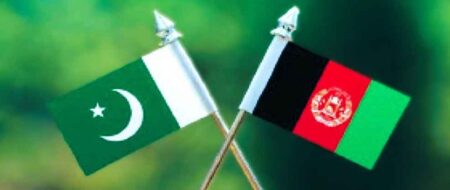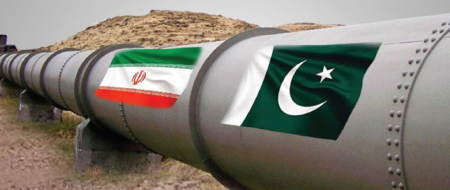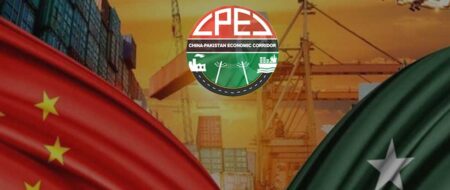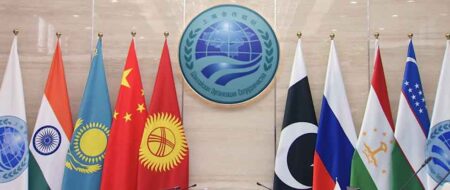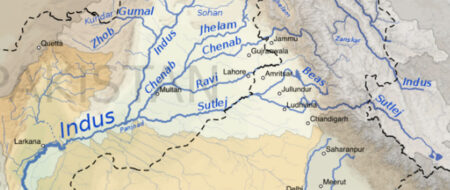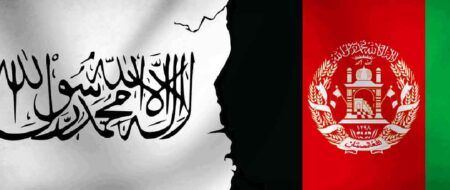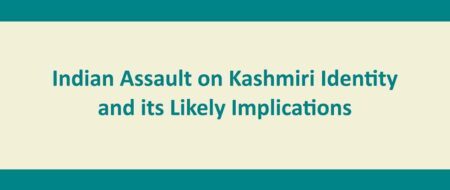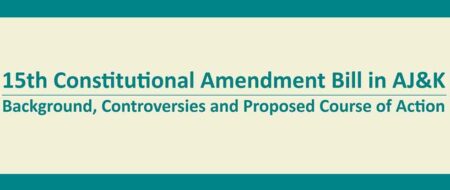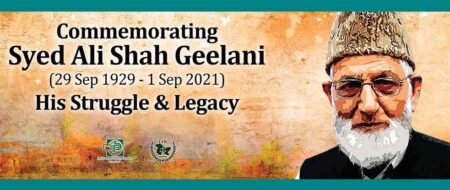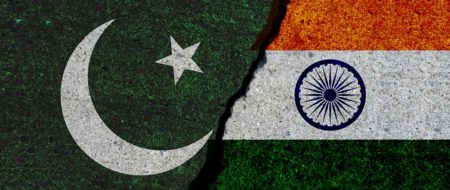Afghan Women: The State of Legal Rights and Security
Afghanistan has experienced almost three decades of continuous conflict, which has undermined the physical and sexual security of Afghan women in rural as well as urban environments.
Policy Perspectives, Vlm 3, No.1
Abstract
[Afghanistan has experienced almost three decades of continuous conflict, which has undermined the physical and sexual security of Afghan women in rural as well as urban environments. In a historical analysis, rape prevalence and sexual violence are directly related to ethnic conflict and warring factions. The International Coalition has exacerbated the problem of warlord-dominance in the countryside by utilizing Northern Alliance militias in the “War on Terror.” These militias have records of extensive human rights abuses and war crimes, including the perpetration of systemic rape campaigns for ethnic-cleansing. Legal reforms on women’s rights must be designed in a culturally sensitive framework, and include justice for victims of sexual violence during the four war periods. – Author]
Historical, Geographic and Economic Context
Under the Taliban’s ultra-orthodox regime, the women of Afghanistan secured an international reputation as a pitiable, persecuted and oppressed underclass, subject to the religious and cultural bondage of male zealots. However, the humanitarian and women’s rights crises of the late 1990s emerged from extreme political upheaval and social fragmentation from 1978-1996. The long-term social, economic, and political consequences of the Soviet-Afghan war and the Afghan civil war have created systemic and countrywide sexual and physical insecurity for Afghan women, and continue to impact the development and practical implementation of women’s rights policies.
This research paper explores the dynamics of sexual violence and women’s rights in the context of Afghanistan’s four most recent war periods: the Soviet-Afghan war and the strife against Soviet installed regimes (1978-92), the Afghan Civil War (1992-96), the Taliban era (1996-2001), and the ongoing “War on Terror,” with particular consideration of rural peoples and ethnic minorities. The radical changes in Afghan women’s human rights, legal rights and socioeconomic condition throughout the four conflict eras contextualize the impact of violent conflict on Afghan women’s physical security.
The objective of the research is to demonstrate the relationship between countrywide political instability and wartime rape, with a focus on the role of warlords. The re-invigoration of militia commanders and warlords during the War on Terror has increased the potential for state collapse, undermined the sexual security of women living under warlord fiefdoms, and denied legal justice for victims of militia rape.
Background in Historical Context
A predominant feature of the past century in Afghanistan has been the impact of modernization theory in the development of women’s rights policy. Modernization theorists emphasize the stagnation of traditional economies, arguing that the traditional lifestyle is circular and subsistence-based, with no opportunities for progress. According to the theory, modernity is defined as a linear process based on the industrial revolution in Europe. Modernization theorists devalue aboriginal knowledge and suggest that “traditional” societies adopt European industrial and “scientific” archetypes. Importantly, the idea that traditional societies can attain the same levels of development as “modern” societies fails to consider the historical fact that European countries directly exploited the wealth base of their colonies to finance their development initiatives.[1]
Although Afghanistan was never subject to direct colonization, the British presence in India heavily influenced the royalty in Kabul, which deliberately sought to imitate Western-styled development in the twentieth century. In the course of these attempts at modernization, the elite leadership in Kabul tried to transform and advance the position of women by integrating them into public life, through legal, economic, and institutional reforms. Violent and aggressive modernization policies were also imposed during the 1980s’ Communist era, which undermined the traditional, cultural, and religious norms of Afghanistan’s diverse population. These efforts emanated from the belief that Afghan “traditional” society could be thrust into “modernity” through external influence.
The end of the Soviet-Afghan war, however, marked a rapid reversal of the modernization trend. The ultra-conservative Taliban regime enforced a reactionary agenda, which aggressively suppressed the rights of both rural and urban Afghan women. Consequently women’s rights were stigmatized as part of the cultural imperialism of modernity, with a vast potential to undermine the values of the Afghan people. European, Communist, and Capitalist ideologies all aggressively interfered with Afghan society, harboring [KAK1]a backlash against Afghanistan’s female population.
Society, Ethnicity, and Religion
The diverse ethnic, linguistic, and racial social cleavages in Afghanistan are “reinforced by a spatial pattern of population distribution into different regions of the country.”[5] These regions are defined by a mountainous topography and extreme climatic variations, with only 15 percent of land suitable for farming.[6] Poverty and the physical destruction of farmland through prolonged war, drought, and neglect have prompted Afghan farmers to participate in illicit opium cultivation from time to time.[7]
Wartime rape has had a long history in Afghanistan. In Afghan culture, the sexual integrity of women is paramount to family honor. As a result, rape and other forms of sexual violence are considered attacks on both the individual victim and the family as a whole. Women who have been sexually assaulted are socially ruined, and, in some cases, ostracized by their own families. Rape and sexual violence in war also have serious international and local political and legal implications. As a tactic of civilian intimidation and ethnic cleansing, rape is considered both a war crime and a crime against humanity under international law.[8] Afghans also consider rape to be punishable under Islamic law, as a crime against the individual victim, her family, and her religion.
Approximately 85 percent of the population of Afghanistan live in rural areas, and over half the remaining 15 percent of urban dwellers reside in the capital city of Kabul. The strong rural bias in the Afghan population is highly relevant in an understanding of women’s rights, in particular, among war refugees that took asylum in neighboring Iran and Pakistan. The rural-urban balance is crucial for developing appropriate, comprehensive, and countrywide women’s rights policies.
Geographic considerations, ethnic differences, and complex tribal affiliations indicate a deep social fragmentation in Afghanistan. Powerful sources of unification transcend these lines of violent conflict. Most importantly, Afghanistan is a predominantly Muslim country, with approximately 85 percent of the population Sunni, and the remaining 15 percent, either Shiite or Ismaili. While there is a small population of Christians, Sikhs, and Hindus in the main cities, the overwhelming Islamic character of the country has the capacity to act as a unifying force against foreign invasion, as was seen during the mujahideen resistance to the Soviet invasion.[9]
The Communist Era (1978-1992)
As the primary breadwinners of Afghan society were either slaughtered or maimed in war in the mujahideen resistance, millions of women were left to fend for themselves. According to William Maley’s estimation, the number of Afghans killed per Soviet soldier was 60:1, approximating 240 Afghan deaths per day for ten years. The number of Afghans killed during the 1978-87 war was near one million, and those injured, 1.5 million, in a nation with an approximate total population of only 15 million people.[13] The Communist era in Afghanistan marked the first of a series of drastic and often contradictory shifts in Afghan women’s social status and sexual security.
The Soviet invasion created violent and long-term societal changes in Afghanistan, especially by transforming young men into militants through military training.[17] The widespread use and availability of AK47 assault weapons and the military fragmentation resulting from the guerrilla resistance has directly exacerbated conditions of sexual vulnerability in female populations.[18]
In particular, under Communist occupation, wartime rape gained popularity as a military strategy to repress insurgency. The phenomenon of wartime rape created widespread social disintegration, resulting from the stigma, humiliation, and social alienation of female victims.[19] Traditional Afghan values on women and honor have made it exceedingly difficult for victims of wartime rape campaigns to recover their positions in society and family. Rape victims that are rejected by family are forced into prostitution to support themselves, or suffer emotional and mental breakdown from stress and shame, often resulting in suicide, self-immolation, and other forms of self-harm.[20]
It is perhaps due to the great importance of traditional family honor codes in Afghanistan that wartime rape became a prevalent military strategy during the Soviet-Afghan War, employed to intimidate and terrorize enemy factions. Rape and torture were used specifically against those villages that were suspected to have supported the resistance, and soldiers were reported to have raped women in front of their male relatives.[21] Afghan women, while not active combatants against the Soviets, were also the direct targets of “deliberate and arbitrary killings,” persecution, terror tactics, and deprivation, as well as sexual abuse, forced marriage, and prostitution by pro-Soviet militias.[22] Rape continued to be a systemic problem in Afghanistan after the departure of the Soviets, during the Afghan civil war.
In an effort to consolidate its power, the Soviet-backed PDPA shattered the traditional relationship between elite leaders and local mullahs and Khans, which had allowed the ethnically diverse and fragile country to function for hundreds of years.[23] The physical destruction of villages through combat and the dispersion of village populations as refugees of war further eroded traditional mullah and Khan networks, leaving an institutional and political power vacuum at the local and elite levels, and thereby undermining traditional mechanisms of protection and justice for victims of rape.
Rape and Sexual Violence during the Civil War
The civil war in Afghanistan (1992-96) that followed the departure of the Soviets, the removal of Najibullah, and the end of the Communist era, was a new phase in brutality for Afghans already exhausted and devastated by war. The militarization of the economy and society resulted in a struggle for power in the political vacuum, which left the United Nations (UN)-backed Rabbani government unable to combat warlords and human rights abuses.[24] It is during this period of social and political anarchy that some of the most violent aggression towards women occurred in Afghanistan’s bloody history.
Women across the country reported to have experienced the highest levels of sexual insecurity during the civil war period. Tajik, Uzbek, Pashtun, and Hazara militias specifically targeted women and girls from rival ethnic factions. Women reported being gang-raped at gunpoint in their homes by militias, in front of their male relatives. The effect of these rape campaigns was the social breakdown of traditional family and community relations.
Amnesty International reports of wartime rape during the civil war of the early 1990s indicate that it was a systemic problem, deliberately orchestrated against female populations by antagonistic warlord factions.[25] Fully aware of the social, psychological, and physical impact of this strategy, warlords advocated the use of rape campaigns to intimidate and terrorize both rural and urban populations, particularly those of different ethnic origins.[26] In some cases, rape was used as a form of punishment against women and girls who were educated or those who were trying to go to school.[27] Perversely, some former mujahideen used rape against women who were deemed to have loose morals, or whose conduct was not considered to be in accordance with traditional and religious practices.[28]
In the Pashtun-dominated southern province of Kandahar, women reported heightened incidents of militia rape, bride abduction, forced marriage, and sexual intimidation during the pre-Taliban period. Militia rape constituted an attack on the nuclear family, as brothers, fathers, sons, and husbands were forced to witness the victimization of their female relatives. Women in Kandahar reported that female victims would commit suicide and commit acts of self-immolation, both out of psychological stress and public protest against the perpetrators of rape.
Afghan men who witnessed the rape of female members of their household were also reported to have a high incidence of suicide. Because Afghan culture places high value on the sexual integrity of females, raped women and girls were considered ‘dishonoured,’ which resulted in the social exclusion of the victim. Reports of male relatives committing suicide after witnessing rape were causally linked to psychological stress and a sense of shame and loss of personal honor.
In Northern Balkh, women reported that sexual violence was at its peak during the Afghan Civil War era. The ethnically diverse region experienced systematic militia rape campaigns, particularly as a method of ethnic genocide. The civil war period entrenched the former mujahideen factions, which had formed along ethnic lines to battle against the common Soviet enemy. The political collapse that ensued after the withdrawal of Communist forces resulted in an implosive power struggle between militia groups, from which the worse sexual violence towards Afghan women occurred to date.
Official state policy during the Rabbani period is difficult to analyze considering the disorder caused by the civil war. For example, the interim authority tried to restrict women’s participation in the public sphere, although women are reported to have continued to work and go to school despite such laws and regulations.[29] Nonetheless, the government’s lack of ability to make and enforce laws allowed warlords a free reign to exercise sexual terrorism against women of rival ethnic factions. However, when faced with the threat of the Taliban movement, these rival militia factions allied together against their common enemy, forming the loose military coalition known as the Northern Alliance. The revolutionary Taliban forces quickly expelled the warlords of the civil war period from their fiefdoms, leaving the Northern Alliance powerless and exiled.
The Taliban Era
The rise and swift victory of the Taliban military and political movement was a direct reaction to the brutal actions of warlords, particularly to the rape of Muslim women. The Taliban were originally comprised of a network of mullahs, some refugees and some former mujahids, who envisioned Afghanistan as a puritan, Islamic regime. Allegations of rape and sexual abuse at the hands of militias were terminated with the ascent of the ultra-conservative Taliban regime, which ended the civil war.
Interviews conducted with women in southern Kandahar province and the northern Balkh province indicated a unanimous countrywide concurrence that the Taliban had completely arrested militia rape campaigns and reduced ethnically motivated violence under their leadership. The Pashtun-dominated Taliban were “only interested in ‘Muslim’ or ‘non-Muslim,’ not ethnicity”.[30]
Despite the sharp decline in sexual violence, women were severely affected by Taliban edicts and restrictions. The Taliban leadership was largely made up of rural Pashtun men with little to no education, and a staunch understanding of traditional values. However, Taliban policies did not necessarily correspond with Afghan tradition or culture, but were based on a fanatical and reactionary type of Islamic revolution, which often had little to do with urban or rural custom.[31] While the Taliban successfully put an end to the rape campaigns of warring factions, their attempts to weed out moral corruption manifested as a violent and repressive backlash against women, who were seen as the cause of their own victimization.
The Taliban’s legal restrictions on personal mobility, access to health care, and education were more disturbing to urban women, as most rural Afghan women had had limited enjoyment of these rights and benefits before their revocation.[32] Many urban women who were widowed and acted as primary income earners for their families were forced to leave their jobs, causing an immediate urban poverty problem. Moreover, the closure of girls’ schools and the restrictions on personal mobility left city women severely disadvantaged. However, because educated, urban Afghan women were better able to organize among themselves and articulate their plight to the international community, the concerns of upper and middle class women in cities received far greater attention than the human rights crises in rural areas and refugee camps. As such, organizations such as Revolutionary Association of Women of Afghanistan (RAWA) and Women for Afghan Women were able to advocate for equal opportunities for female education and employment in Afghanistan’s urban areas.[33]
Much less international concern was raised about the living situation of women and children outside the main cities, which the UN High Commissioner on Refugees and several correspondents described as a humanitarian catastrophe of “biblical proportions.”[34] Afghan refugees and internally displaced persons not only suffered from the ravages of two decades of war, but also frequently fell victim to the millions of unexploded landmines scattered across the country. Severe drought in the late 1990s further crushed Afghanistan’s agricultural economy, creating famine-like circumstances for rural Afghan subsistence farmers.
Although the effect of Taliban edicts on rural women received comparatively little attention in the international media, women living in villages underwent extreme difficulties under the Taliban’s political leadership. Rural women in the Pashtun-dominated southern province of Kandahar reported that restrictions on their personal mobility undermined their ability to provide basic care for their families, as they were required to be accompanied at all times by a male relative. As such, these women reported that they could not take their children to health clinics, work their fields, or engage in other tasks essential to their survival.
Despite these impediments, rural women in the south reported that the sexual and physical security of women and children was heavily guarded under the Taliban regime. Not only did these women report that they were safe from rape, but they also noted a significant decline in the controversial traditional practices of forced marriage and “bride-napping”.
On the other hand, women from the ethnically fragmented northern Balkh province reported a much more violent military presence of the Taliban regime, although not of a sexual nature. The northern region was an intense battleground between Taliban forces and the militia factions of the civil war period, who joined forces to establish the United Front, later known as the Northern Alliance. As such, not only did civilian residents report severe combat, but they also recounted frequent defection and changing of military and political affiliations. Specifically, both rural and urban residents of the northern region reported that local militiamen of the civil war era “changed their uniforms” to join the Taliban, on the presumption that Taliban forces would be the victorious over the Northern Alliance. These new Taliban fighters were not ideologues, nor did they have any religious training. These low-level militiamen were given policing and enforcement duties to implement the religious laws of the elite Taliban leadership. Women from all regions reported that these low-level Taliban militiamen prevented widows from employment and personal mobility, causing both destitution and death.
The elite Taliban command took little interest in the humanitarian effects of their rigid laws on the Afghan people and neglected to educate themselves or their militias in the spirit of Islamic law and Afghan culture. Instead, the brutal enforcement of the Taliban’s political model received harsh criticism from the international community, until the fall of the regime in 2001.
“Warlord” Democracy: Current Political Change and Sexual Security
The US-led War on Terror has entrenched a political culture of warlordism in Afghanistan, which denies both male and female victims the right and ability to seek justice for human rights violations, including sexual violence. Because the American military backed the Northern Alliance resistance front as a convenient military strategy, the subsequent power structure prescribed by the Bonn Agreement has accommodated the interests and power struggles of the warlords that participated in the anti-Taliban offensive. Many of the US-backed warlords that gained political concessions through the Bonn Agreement are the same individuals named by Amnesty International and other human rights organizations as having orchestrated systematic rape campaigns in the pre-Taliban civil war period.[35]
For example, the notorious Uzbek warlord General Rashid Dostum, the primary US ally in the War on Terror, has publicly boasted about conducting systemic rape campaigns and slaughter of villagers. Ample evidence and eyewitness accounts also implicate General Dostum and the US army in the grizzly slaughter of over 3,000 pro-Taliban prisoners of war at Mazar-e-Sharif in 2001 at an identified mass grave site, although the Afghan government and the international community have declined to hold any party liable.[36] Shockingly, in new democratic Afghanistan, Dostum has been given the official post of Chief of the Armed Forces.[37] The fact that warlords alleged to have committed severe human rights atrocities and violence against women have been offered a position of political power is a humiliating blow to both female and male victims. There has been no concerted international effort to charge such individuals as war criminals in Afghanistan, nor any process through which victims can demand justice.
Despite the disarmament effort in the post-Taliban democracy, warlords have regained a free hand over their controlled territories in Afghanistan with little accountability. After three years, the Afghan government and international community announced that they had successfully disarmed all 60,000 Afghan Military Forces (AMF).[38] However, the disarmament program, which primarily targets inconsequential rank and file fighters, has been largely ineffectual in tackling the overwhelming problem of militia power and gun prevalence in Afghanistan at large. It is estimated that over 120,000 militiamen still function independently of the state, with allegiances to powerful district commanders.[39] Under the guise of international political legitimacy, warlord rule remains a defining characteristic of Afghanistan’s new democracy. Of the 6,201 candidates running for office in the Provincial Council and the Wolesi Jirga (Grand Council), the Afghan Independent Human Rights Commission reported that approximately 16 percent of the nominees were former commanders, some of which still have power to “pose a significant threat to their communities.”[40] The final election results revealed that over half of the elected candidates are militia commanders or have links to militia commanders. Many rural communities reported abuses and intimidation of voters by these militia-candidates, including threats of extortion, burning down of homes, and violence.[41]
Despite the renewed power of warlords, the presence of the international community and coalition forces has obstructed intense anti-civilian activities by warlords and militia leaders. Systematic rape campaigns have not been reported in any part of the country, despite the revived military preponderance of warlords previously implicated in genocidal rape campaigns. However, incidents of rape by militia commanders were reported in numerous districts in the South and East, where locals observed commanders targeting specific girls or women of interest, often picking them off the streets at gunpoint. These rape allegations seem to occur on an incidental basis by warlords with particular self-interest objectives, rather than as part of a systemic policy of ethnic cleansing.
Women interviewed at a mother-child health centre in rural Kandahar province reported an increase in sexual and physical violence against their children. Specifically, rural women reported incidents of kidnapping in their areas, for both sexual exploitation and human organ trafficking. The Afghan Independent Human Rights Commission [KAK2]in Kandahar verified and recapitulated the gravity of these threats to rural children from criminal gangs and powerful local militias.[42]
In northern Balkh province, women reported that the ethnically motivated rape campaigns they suffered during the civil war period have not resumed since the expulsion of the Taliban regime. The north has recently gained a relative political and military stability, particularly since the relocation of General Dostum to Kabul, removing the warlord from direct control of his turf. However, female participants in the Mazar-e-Sharif Workshop emphasized that the capacity for ethnic violence, especially rape, remains high in the diverse northern region. The militias that conducted systematic rape campaigns and ethno-cultural genocide were re-mobilized against the Taliban, and now hold legitimate political power in the new government.
Political systems have had a significant impact on the sexual security of women, throughout the long era of war in Afghanistan. Attempts to “modernize” Afghan culture and women’s rights policies have been met with social and political backlash. Historically, external actors have imposed modernization efforts on Afghan society, and very little grassroots women’s rights work has emerged from within the framework of traditional Afghan culture. As such, women’s rights issues have been given a Western label, and are considered to oppose traditional and religious values.
However, Afghan women have had some notable successes that may change the course of their country’s progress. In particular, the resumption of female education, which was banned under the Taliban, has created a new academic and social space for Afghan women. Educated middle-class women can play a significant role in the institutional and legal development of the country. While some scholars have argued that Afghanistan is not yet ready for “feminism,” numerous scholars have already written on Islamic law and women’s rights, secular and Islamic feminist resistance, and women’s rights as human rights. The presence of an educated, female elite class may provide the basis of a grassroots women’s rights movement that conforms to valued traditions and religious beliefs.
Legal reforms in post-Taliban Afghanistan have significantly enhanced the position of women, especially those in urban areas. The democratic transition has included civil and political liberties for women, including the right to vote, engage in employment, participate in public affairs and offices, and receive education. Women in Kabul, Balkh, and Kandahar provinces greatly value the opportunity to exercise their right to vote, their freedom of mobility, and their right to employment. However, in the troubled southern region, such as Hellmand and Urozgan provinces, the central government is drastically less effective in implementing these social and legal reforms.
It is important to note that while female education and civic participation has increased in both rural and urban areas, there remains a strong urban bias in the delivery of health and social services to Afghan women. The harsh climatic and geographic conditions and state of political lawlessness throughout the Afghan countryside have deterred international organizations from servicing destitute rural populations. The majority of non-governmental agencies involved in humanitarian relief for Afghan women are centered in the capital city of Kabul. The central government, which has successfully ratified new egalitarian legal reforms, currently lacks the practical capacity to provide the equal rights, fair treatment, and physical protection of rural Afghan women, leaving them vulnerable to exploitation by local commanders.
International Policy: Review and Recommendations
War and political insecurity in Afghanistan are directly related to rape incidence and sexual violence, especially under a free reign of ethnically divided militia factions. By empowering the Northern Alliance militias, the international community has created a long-term institutional problem that will undermine the democratic transition. Not only do these warlords have the military capacity to affect the electoral processes in their localities, but their de facto rule of the countryside also incapacitates the central authority in maintaining effective governance.
The preponderance of warlords has also been legitimized through the democratic process, which offers militia commanders an opportunity to engage the political process in an official capacity while secretly maintaining their criminal and military powers. As a result, the international community has made the long-term presence of coalition military forces necessary for maintaining law and order. Because the international community empowered these militias in the War on Terror, the presence of international forces is required to keep the commanders under control, in order to avoid the brutality and violence of the civil war period.
The recent decision by the North Atlantic Treaty Organization (NATO) to increase the number of International Security Assistance Force (ISAF) troops to expand the international mission into the unstable countryside is the most recent attempt to bolster the central government’s effectiveness in the rural regions.[43] The expanded mission has been hailed as the solution to transition from warlord rule to democratic self-governance. The Canadian military recently announced that its new troop contingent expects to remain in Kandahar province for up to 20 years to help restore the country and prevent another collapse into civil war. These forces are expected to act as a stabilizing force to keep warlords in check.
However, a long-term international presence might be alarming to Afghans who have a history of deep xenophobia and hostility towards occupying forces. Furthermore, regional and international power struggles between Pakistan and India, and the USA and Russia have exacerbated Afghanistan’s internal fragmentation, as international military forces continue to mobilize paramilitary groups against their rivals. Afghan people have also grown suspicious of the international humanitarian agenda in Afghanistan, which diverts a majority percentage of international funds to private security and foreign salaries, rather than food, medicine, or other vitally needed supplies for Afghan people.
There are four key actions that the International Coalition and civil society actors must consider in order to correct the political chaos that has emerged in the post-Taliban period, which undermines the rights and protection of Afghan women.
First, American forces must stop financing militias for use against the Taliban and al-Qaeda in the War on Terror. By utilizing these proxy militias, the international community has disempowered Afghan people and undermined the capacity of the central government to protect its citizens and enforce its laws. The resulting political instability and preponderance of foreign-backed warlords and militia groups in the countryside also directly threatens both the physical and sexual security of rural Afghan women.
Second, the warlords that the US-led coalition co-opted during the offensive against the Taliban, who now hold official Parliamentary and Cabinet positions in the central government, must be stripped of their political power in the new democracy. Furthermore, those warlords accused of war crimes and crimes against humanity, including sexual abuse, must be brought before both local courts and international tribunals. In order to establish a culture of social reconciliation and peace-building, all human rights violations committed during the four war periods must be resolved through legal and social mechanisms that provide rape victims with the opportunity to seek justice for atrocities perpetrated against them. Traditional values, especially those pertaining to women, the family, and social justice, must be considered in the development of laws that address violence against women.
Third, in order to address the survival needs of the majority of Afghan women, international civil society actors must invest in rural development, health, and education, and co-operate with local partner organizations. Currently, international funding for humanitarian assistance is directed primarily towards the more stable and accessible urban environments, where international organizations have developed isolated communities of wealthy ex-patriots. Rampant accusations that non-governmental organizations have squandered Afghanistan’s international funding through dubious projects and lofty salaries for foreign workers must also be investigated, in order to establish legitimacy and accountability within the civil society network. The creation of an internationally-sponsored, government-monitored, socially responsible, and grassroots civil society in rural Afghanistan would empower rural women in their communities and increase the capacity of the central government in the lawless countryside.
Fourth, the traditional Islamic culture and values of Afghans must be respected in the development of women’s rights policies. Historically, Afghans have opposed radical changes in women’s social and legal status, especially those that they perceived violated the principles of Islamic law. In order to maintain a semblance of legitimacy with rural peoples, the international community must demonstrate an understanding of and respect for traditional norms and Islamic religious values, including those pertaining to women. By operating within culturally sensitive frameworks, the international community would avoid hostile backlash and better address the needs of Afghan women.
The failure of the state of Afghanistan remains the most fundamental obstacle in the promotion of gender equality, as without the strength to enforce domestic legal and political reforms in rural areas, the government is ineffectual in most of the country. The International Coalition in Afghanistan must cease empowering and enabling warlords and militia commanders for convenient military purposes, which fundamentally impedes efforts to bring rapists and human rights violators to justice in local and international arenas. Coalition forces and the international community must also remain conscious of the deep Islamic character of the Afghan people, as it pertains to cultural norms that apply to women, sex, and family relations.
References
1. Allen, Tim and Thomas, Alan, eds. Poverty and Development into the 21st Century. Oxford: Oxford University Press, 2000.
2. Amnesty International. Women in Afghanistan: Pawns in men’s power struggles. Amnesty International, November 1, 1999.
3. Armstrong, Sally. Veiled Threat: The Hidden Power of the Women of Afghanistan. Toronto: Penguin, 2002.
4. Dupree, Nancy Hatch. “Cultural Heritage and National Identity in Afghanistan.” Third World Quarterly. Vol. 23, No. 5. 2002.
5. Goodson, Larry P. Afghanistan’s Endless Wars: State Failure, Regional Politics, and the Rise of the Taliban. Seattle: University of Washington Press, 2001.
6. Isbister, John. Promises Not Kept: The Betrayal of Social Change in the Third World. Connecticut: Kumarian Press, 1998.
7. Maley, William. The Afghanistan Wars. New York: Palgrave Macmillan, 2002.
8. Newell, Nancy Peabody and Newell, Richard S. The Struggle for Afghanistan. Ithaca: Cornell University Press, 1982.
9. Ozerdem, Alpaslan. “Disarmament, demobilisation, and reintegration of former combatants in Afghanistan.” Third World Quarterly. Vol. 23, No.5.
10. Rubin, Barnett R. The Fragmentation of Afghanistan. Second Edition. New Haven: Yale University Press. 2002.
Appendix
Research Methodology
This paper utilized social science methods in field study and document research in the data collection process. The primary data collection applied observation and interview research methods in Mazar-e-Sharif, Kabul, Jalalabad, and Kandahar, as well as in the rural areas of these cities. Women from both urban and rural environments in Afghanistan were interviewed from a diverse range of ethnic affiliations. Differences in educational background, social and economic status, and geography were also considered in the collection and analysis of the primary data. Field study in the eastern and south-eastern regions was beyond the scope of the study; however, information gathered in Kabul and other major cities was used to infer generalizations about the evolution of women’s sexual and physical security across Afghanistan.
Library research included a review of primary documents, field reports, and academic materials. Academic materials informed the theoretical discussion and the analysis of the historical evolution of women’s political and social rights in Afghanistan. Government and non-governmental field reports were used to supplement the analysis on the current state of Afghan women’s security in both rural and urban environments.
A workshop was held in May 2005 at the ACBAR office in Mazar-e-Sharif, Afghanistan with eight women* of different ethnic affiliations, including stakeholders from media, humanitarian, and government organizations. The workshop was focused on the verification of the field data presented.
This paper explores rape prevalence throughout the four war eras. Prostitution and other forms of sexual degradation that have emerged as war-related social problems in Afghanistan are not discussed at length. Analyses of the complex problems of forced marriage, marital rape, and domestic violence were also beyond the scope of this research project.
For the purpose of this research, “rape” is defined as sexual intercourse forced by an assailant against a victim, outside the institution of marriage. In accordance with Afghan social norms, the term rape is understood to apply to non-marital relations only. This paper further defines “wartime rape” as sexual intercourse forced by militia gangs or commanders, for the purpose of achieving social, psychological, military, and political objectives against the victim, her family, or her tribal or ethnic affiliations.
[1]John Isbister, Promises Not Kept (Connecticut: Kumarian Press, 1998), pp. 32-43. For an opposing view, see Tim Allen and Alan Thomas, Poverty and Development in the 21st Century (Oxford: Oxford University Press, 2000), Section 2.2.
[2] Barnett R. Rubin, The Fragmentation of Afghanistan, Second Edition (New Haven: Yale University Press, 2002) p. 26.
[3] Ibid.
[4] Ibid. pp. 25-32.
[5] Larry P. Goodson, Afghanistan’s Endless Wars: State Failure, Regional Politics, and the Rise of the Taliban (Seattle: University of Washington Press, 2001), p. 12.
[6]Ibid. pp. 19-20.
[7] For general information about Afghan culture, history, and geography, see Afghanistan’s Web Site – http://www.afghanistans.com/
[8] See for example: The Rome Statute, Article 7 & 8 (incomplete reference).
[9] Afghanistan’s Web Site, Op. cit.
[10] Newell and Newell, The Struggle for Afghanistan (Ithaca: Cornell University Press, 1982), p. 46.
[11] Ibid. pp. 47-52.
[12] William Maley, The Afghanistan Wars (New York: Palgrave Macmillan, 2001), pp. 95-7. Note: The foreign states – particularly the American and Pakistani governments – supported the mujahideen resistance.
[13] Ibid. p. 154
[14] Newell, Op. cit., p. 83
[15] Ibid.
[16] Maley, Op. cit., pp. 58-60
[17] Alpaslan Ozerdem, “Disarmament, demobilisation, and reintegration of former combatants in Afghanistan,” Third World Quarterly, Vol.23, No.5, p. 968 and UN OCHA Integrated Regional Information Network, Afghanistan: Kabul calls for jobs for former combatants, February 26, 2003.
[18]Larry P. Goodson, Afghanistan’s Endless Wars (Seattle: University of Washington Press, 2001) pp. 97-99
[19] See also Amnesty International, Afghanistan: A Human Rights Catastrophe. Available at: http://www.amnesty.org/ailib/intcam/afgan/afgtoc.htm
[20] Interviews with Dr. Masouda at the Mother-Child Health Clinic in Kandahar, Afghanistan, May 2005.
[21] Amnesty International Report 1999, Women in Afghanistan: Pawns in men’s power struggle, November 1, 1999; Available: http://www.amnesty.ca/ library/1999/ asa1111.htm
[22] Ibid.
[23] Barnett Rubin, The Fragmentation of Afghanistan (New Heaven: Yale University Press, 2002), pp. 135-45
[24] Maley, Op. cit. , pp. 194-217
[25] Amnesty International, Op. cit.
[26] Interactive Workshop (Mazar e Sharif: ACBAR office, May 8, 2005)
[27] Amnesty International, Op. cit.
[28] Ibid.
[29] Maley, Op. cit., pp. 194-217
[30] Interview with Akala bint Jalat Karadar in Khoja Hotak village, Balkh province, May 9,2005.
[31] Nancy Hatch Dupree, “Cultural Heritage and National Identity in Afghanistan,” Third World Quarterly, Vol. 23, No. 5, 2002, p. 980. See also Sally Armstrong, Veiled Threat: The Hidden Power of the Women of Afghanistan (Toronto: Penguin, 2002), Chapter 4.
[32] For more see Hannah Bloch, “Still No Place for the Ladies,” TIME Asia, May 29, 2000. Available: http://www.time.com/time/asia/magazine /2000/0529/afghanistan.women.html
[33] See RAWA at www.rawa.org and WFAW at http://www.womenforafghanwomen .org/
[34] See BBC News February 22, 2001. “Pakistan to evict 100,000 Afghans.” http://news.bbc.co.uk/1/hi/ world/south_asia/1184312.stm
[35] See 1995 Amnesty International Report
[36] See Jamie Doran’s documentary “Massacre at Mazar” for Dostum’s interview.
[37] Alpaslan Ozerdem, Op. cit. p. 964
[38] ANBP statistical records are available at http://www.undpanbp.org/
[39] Interview with ANBP Public Relations Officer Ahmad Jan Nawzadi, May 2005
[40] See AIHRC-UNAMA Report: “Joint Verification of Political Rights: Wolesi Jirga and Provincial Council Elections, First Report,” April 19–June 3, 2005, p. 3.
[41] Ibid.
[42] Interviews in Kandahar province were conducted in May 2005.
[43] For more information on the expanded NATO mandate, see www.nato.int/
* Workshop Participants: Diana Hashimzada, Co-operation Centre in Afghanistan; Anisa Popal, THRA; Kobrat Raoufi, Women for Women International; Farida Faqiri, Sayora Offices; Nastaran Nowraz, Sayora Offices; Fariba Majid, Deputy of Women’s Affairs; Ruqia, PRB; Dr. Abdal Baqi, BRAC.


